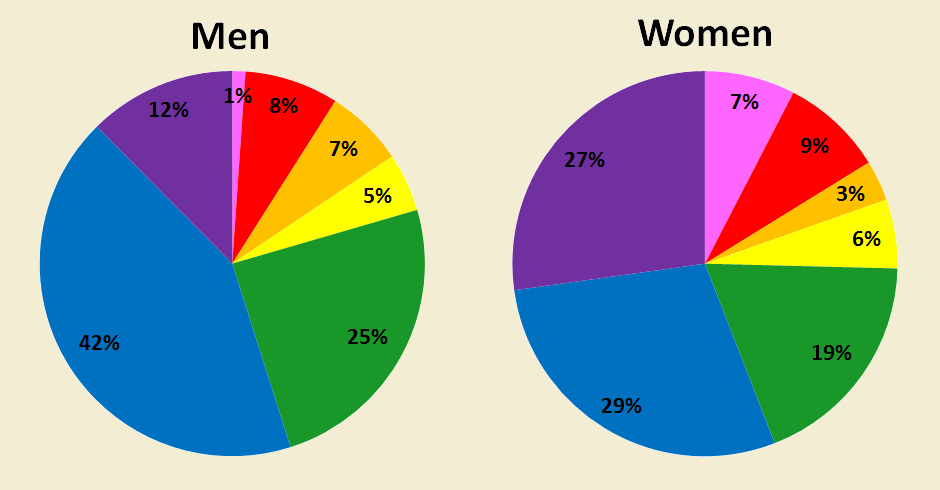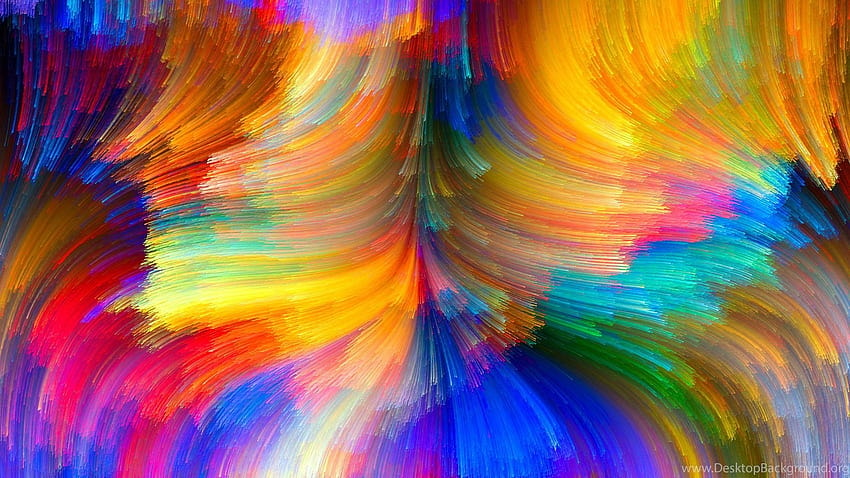My shopping cart
Your cart is currently empty.
Continue ShoppingWhen it comes to the world of color, there are certain shades and hues that stand out above the rest. These colors have become synonymous with emotion, culture, and even branding in today's society. From vibrant reds to calming blues, every color has its own unique meaning and impact on our daily lives.
In this article, we will explore some of the most popular colors in the world and delve into how they can influence decision-making processes. We will examine the psychological effects of different colors, their cultural significance, and how businesses utilize them in marketing strategies. By understanding the power of color, we can gain a deeper appreciation for its role in shaping our perceptions and actions. So join us as we take a colorful journey into the world's most beloved hues and discover their impact on our lives.

Before we dive into the most popular colors in the world, let's first understand the concept of color psychology and its effect on decision-making. Color psychology is defined as the study of how colors affect human behavior, emotions, and decisions. It explores how different hues can evoke certain feelings and influence our thoughts and actions.
For example, the color red is known to stimulate excitement and passion while blue has a calming effect on our minds. This understanding of color psychology has been utilized by marketers for decades to create impactful advertisements and branding strategies. From logos to product packaging, businesses carefully choose colors that will resonate with their target audience and persuade them to make a purchase.

Now, let's take a look at some of the world's most popular colors and their significance in different cultures. These colors have stood the test of time, remaining consistently popular across various industries and countries.
Blue is often associated with trust, reliability, and calmness. It is the most popular color in the world and is widely used in corporate branding to convey a sense of professionalism and stability. In Western cultures, blue is also linked to masculinity and intelligence.
However, in Eastern cultures, blue is associated with immortality and spirituality. In China, blue was the color of the gods and was often seen as a symbol of good luck.
Red is a bold and attention-grabbing color that has long been associated with passion, love, and energy. It is also known to evoke strong emotions such as excitement and urgency. That's why many businesses use it in their marketing campaigns to create a sense of urgency and encourage customers to take action.
In Eastern cultures, red symbolizes happiness, prosperity, and good fortune. It is often worn during special occasions like weddings or New Year celebrations.
Yellow is a bright and cheerful color that represents warmth, happiness, and positivity. It is also associated with creativity and intellect, making it a popular choice for brands targeting young audiences.
In Japan, yellow holds cultural significance as the color of courage and loyalty. In India, it is traditionally associated with merchants and farmers.
Green is widely known as the color of nature and symbolizes growth, harmony, and balance. It is often used in branding to promote eco-friendliness or health-consciousness.
In many cultures, green represents luck and fertility. In Islam, it is considered a sacred color and represents paradise.
Purple has long been associated with royalty, luxury, and spirituality. It combines the passion of red with the tranquility of blue, making it a popular choice for brands looking to convey a sense of sophistication and creativity.
In ancient times, purple was a rare and expensive color that only the wealthy could afford. It has also been associated with spirituality and wisdom in many cultures.
Pink, often associated with femininity and love, is a color that evokes feelings of nurturance and tenderness. It is widely used in branding for products targeted at women or children.
In some cultures, pink symbolizes youthfulness and playfulness. In others, it is seen as a color of strength and courage.
Black is a powerful and versatile color that can represent both elegance and mystery. It is often used in luxury branding to convey sophistication and exclusivity.
In many cultures, black symbolizes mourning or death. However, it can also represent resilience and protection.
White represents purity, simplicity, and cleanliness. It is commonly used in healthcare branding to evoke a sense of trust and sterility.
In Eastern cultures, white is often associated with mourning and funerals. In many Western countries, it symbolizes purity and innocence.
As we can see, colors hold great significance in different cultures and have the power to evoke strong emotions and influence decision-making processes. Businesses use this knowledge to their advantage by carefully selecting colors in their branding strategies to attract customers and create brand loyalty.
But the influence of color goes beyond marketing. It can also impact our personal lives, from fashion choices to interior design decisions. Understanding the psychological effects of different colors can help us make more informed decisions and create environments that promote our desired emotions.

Here are some examples of colors that are considered lucky or unlucky in various cultures.
Red- In China, red is considered a lucky color and is often used in traditional celebrations and ceremonies. However, in some Western cultures, it can also represent danger or warning.
Black- While black symbolizes power and sophistication in many countries, it is seen as an unlucky color in some Asian cultures. It is associated with death and is often worn during funerals.
Yellow- In Eastern cultures, yellow is considered a lucky color and is associated with good fortune. However, in some Western cultures, it can represent cowardice or caution.
Green- In many Western cultures, green is associated with luck and prosperity. However, in some Eastern cultures, it can be seen as a symbol of infidelity.
Colors can have a profound impact on our emotions and can even affect our physical and mental well-being. For example, exposure to the color green has been shown to reduce stress levels and promote relaxation, while red is known to increase heart rate and stimulate appetite.
Different colors also have varying effects on individuals based on their personal experiences and cultural background. That's why it's important to consider the cultural significance of colors before using them in marketing strategies or personal choices.

Several factors can influence how we perceive colors, including:
Culture- Culture plays a significant role in color perception, as different societies associate colors with specific traditions, emotions, and meanings. For instance, while white symbolizes purity in Western cultures, it is often associated with mourning in some Eastern cultures. These cultural differences can shape how individuals react to or interpret colors in various contexts, such as fashion, art, or marketing. Understanding these associations is essential when creating designs to appeal to a diverse audience.
Individual Experiences- Each person’s life experiences uniquely shape their perception of colors. Colors may carry personal meanings linked to memories or emotions, making certain hues more impactful for some than others. For example, a person might associate the color blue with feelings of calm from cherished seaside vacations, while another might interpret it as somber due to a particular event. These personal associations highlight the deeply subjective nature of color perception.
Age and Gender- Age and gender often influence color preferences and perception patterns. Younger individuals tend to gravitate towards bright, vibrant hues, while older adults may prefer softer, muted tones. Similarly, studies show gender-based tendencies in color preferences, with women often favoring warmer colors and men leaning toward cooler shades. It is important to consider these demographic factors when selecting color schemes in industries like fashion or advertising.
Context - The context in which a color appears can dramatically alter its perception. For example, red might evoke feelings of romance when used on a Valentine’s Day card but signal danger or urgency on a road sign. The surrounding elements, design purpose, and intended message all contribute to how a color is interpreted. Designers must carefully analyze the contextual usage of colors to ensure they convey the desired meaning effectively.
Lighting- Lighting significantly affects how colors are perceived, as variations in brightness, intensity, and quality can alter their appearance. A color viewed under natural daylight may look entirely different under artificial lighting or dim conditions. Warm or cool lighting tones also shift the perception of hues, influencing how colors harmonize within a space. This makes lighting an essential consideration for industries like interior design and retail.
Personal Preferences- Personal preferences, shaped by upbringing, personality, and individual tastes, dictate how people respond to different colors. While some may find yellow uplifting and cheerful, others may view it as overpowering or unpleasant. These subjective preferences are critical when choosing colors for personal spaces, clothing, or branding, as aligning with individual or target audience preferences can enhance appeal and resonance.
At My City Doors, we understand that choosing the right color for your door is a crucial decision. That's why we offer an extensive range of colors in our collections, from traditional and classic to modern and contemporary. Our color selection includes options such as red, black, white, green, purple, and more to suit various design preferences.
We take pride in providing top-quality doors that not only enhance the aesthetic appeal of your space but also evoke desired emotions through carefully chosen colors. With our vast selection and expertise in interior design trends, you can trust us to help you find the perfect color for your door.
Visit our showroom or browse our online catalog to explore our wide range of color options and find the perfect fit for your home. Our team is dedicated to providing excellent customer service and ensuring your satisfaction with every purchase.
Popular interior paint colors include vibrant colors, neutral colors, and earth tones. These choices are influenced by current design trends and personal preferences.
Contrasting colors can significantly impact a room’s aesthetic by creating visual interest and balance, making spaces feel more dynamic.
Some of the biggest color trends include cool colors like blues and greens, along with primary colors and earthy tones that complement modern designs.
Tech companies often choose colors from a curated color palette, like those from brands like Benjamin Moore, to create vibrant yet calming environments in their office spaces.
A favorite color often depends on personal style, but neutral tones and soft earth tones are consistently popular choices for interior spaces due to their versatility and timeless appeal.
Colors have a significant impact on our lives and can influence our emotions and decision-making processes. Understanding the cultural significance and psychological effects of different colors can help us make informed choices in both personal and business scenarios. And when it comes to choosing the right color for your door, you can trust My City Doors to provide top-quality options that meet your design needs.
So, whether you're looking for a lucky color or one that evokes specific emotions, we've got you covered. Visit us today and let us help you find the perfect color for your door! So don't wait any longer - come check out our collection now! Happy shopping!